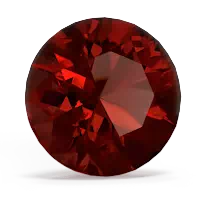

The celtic knot is an ancient symbol of the journey of life. With no beginning and no end, the knot represents the timeless nature of our spirits and the world we live in. A Garnet celtic knot combines these concepts with the spiritual attributes of the Garnet . Garnets have ancient connections with feminine life force. A garnet pendant worn close to the heart is said to promote balance and peace of mind. Blue Topaz is known as the gem that has the power to improve one’s communication skills. A blue topaz pendant may make you a more eloquent and confident speaker.